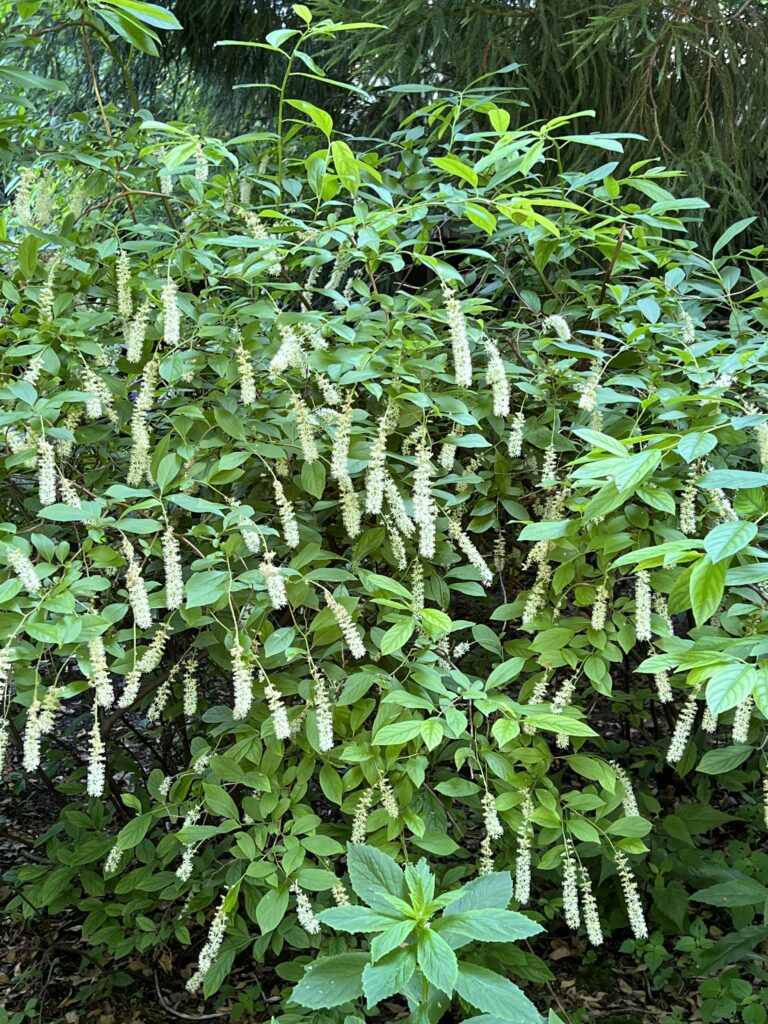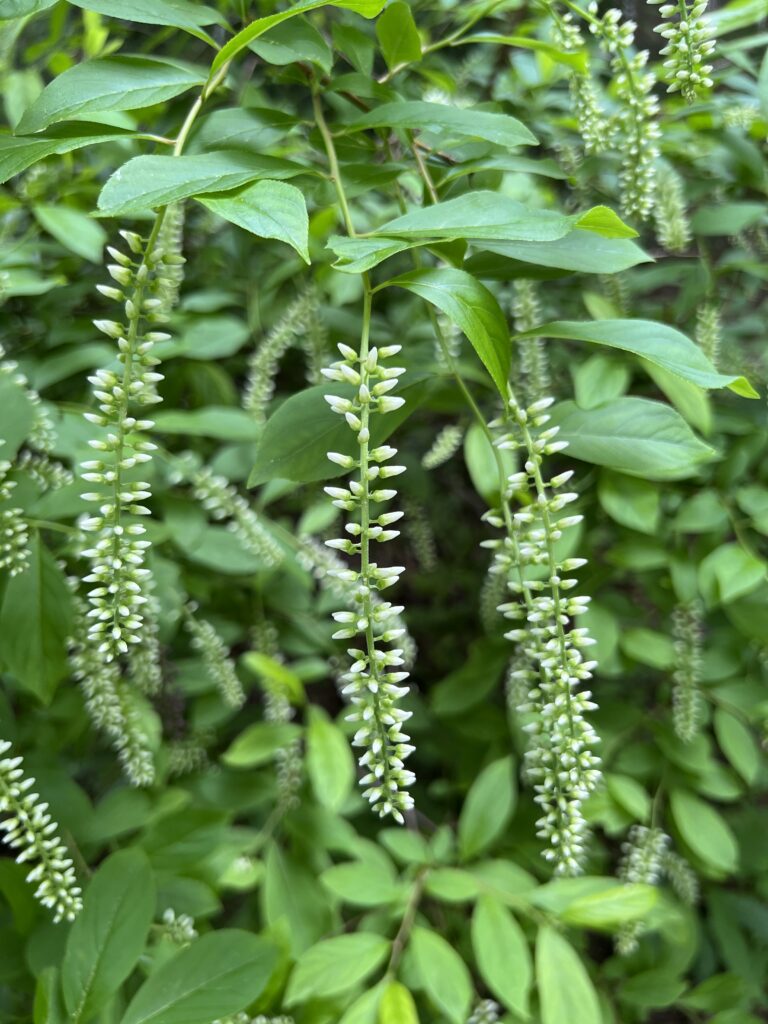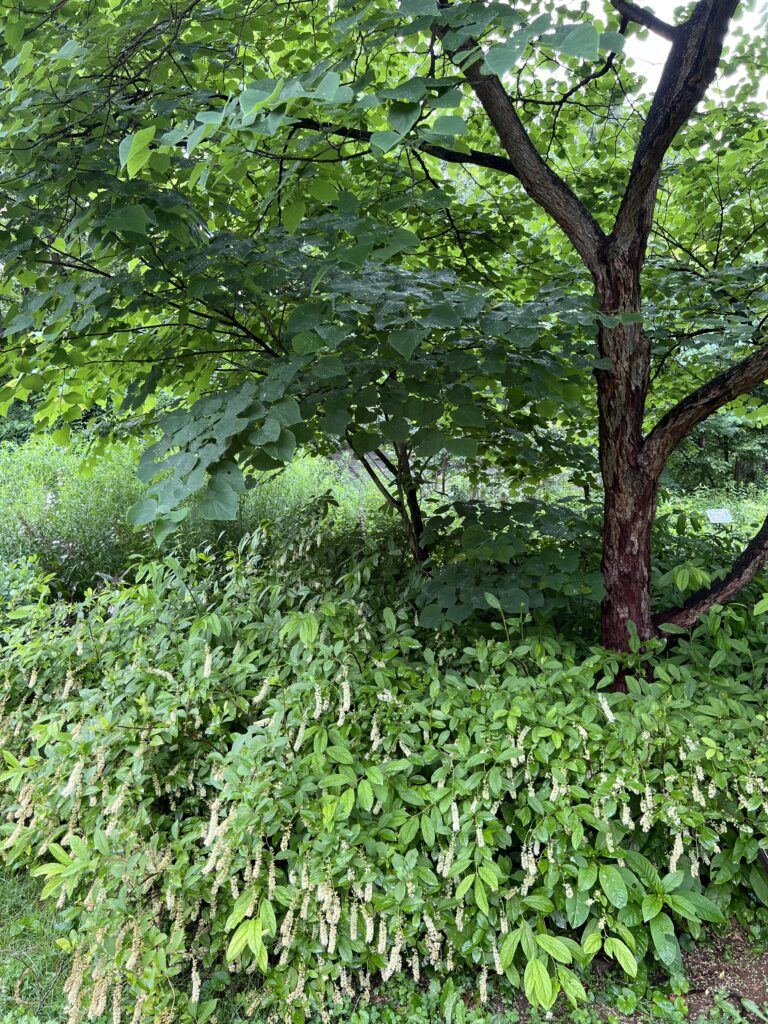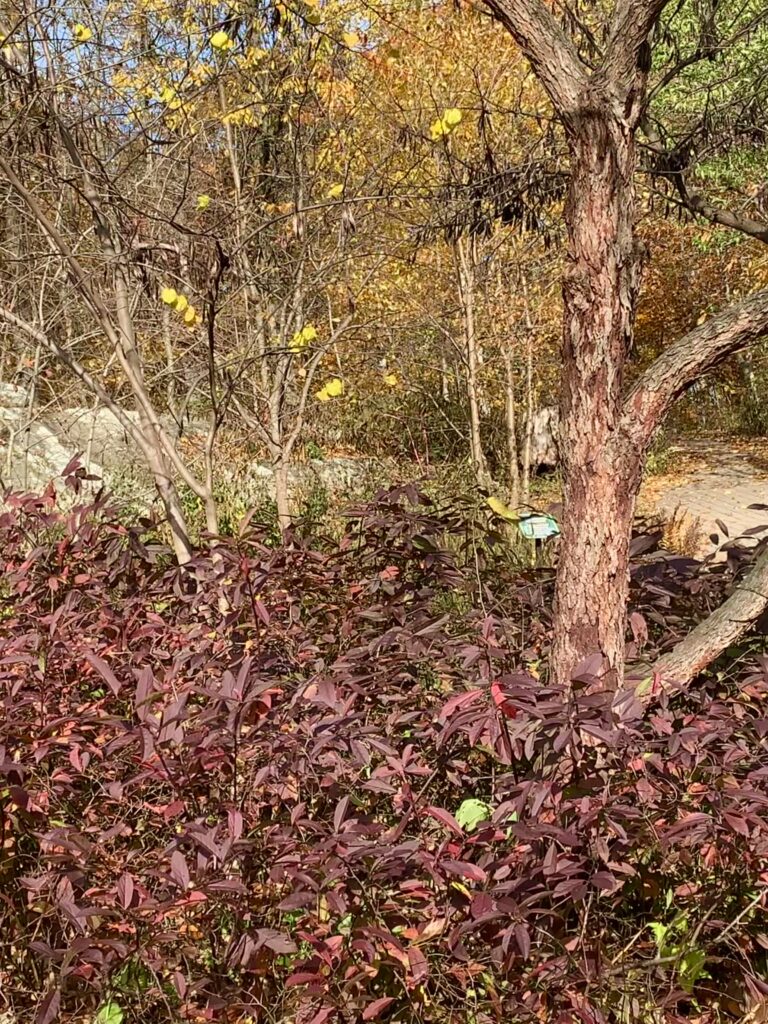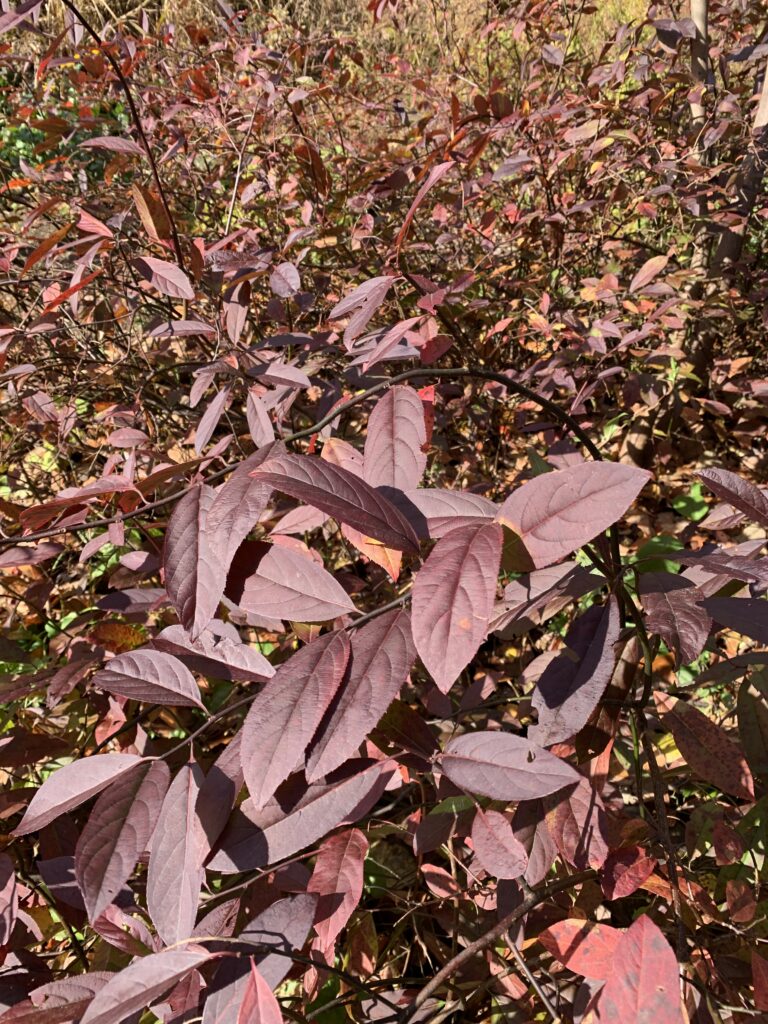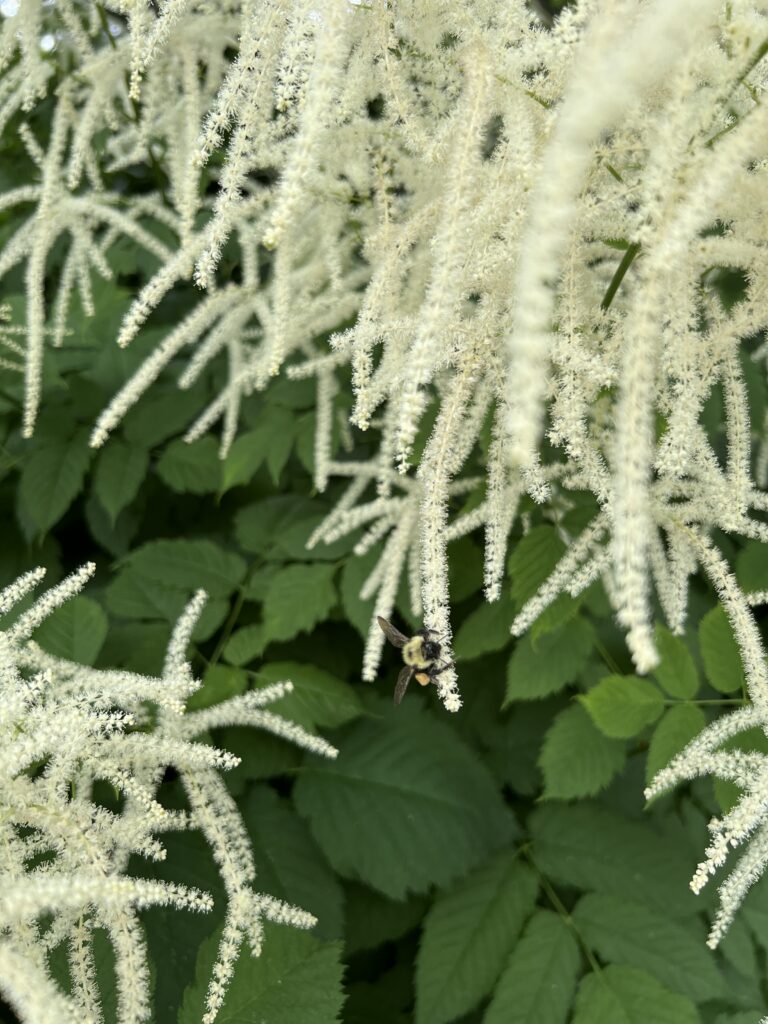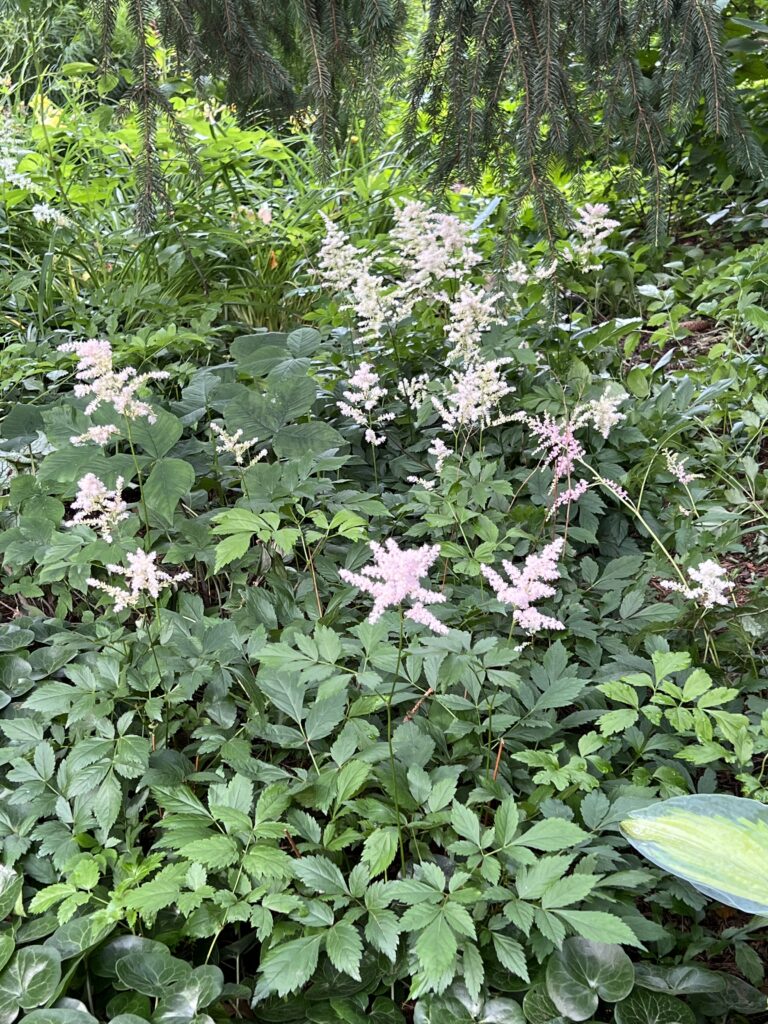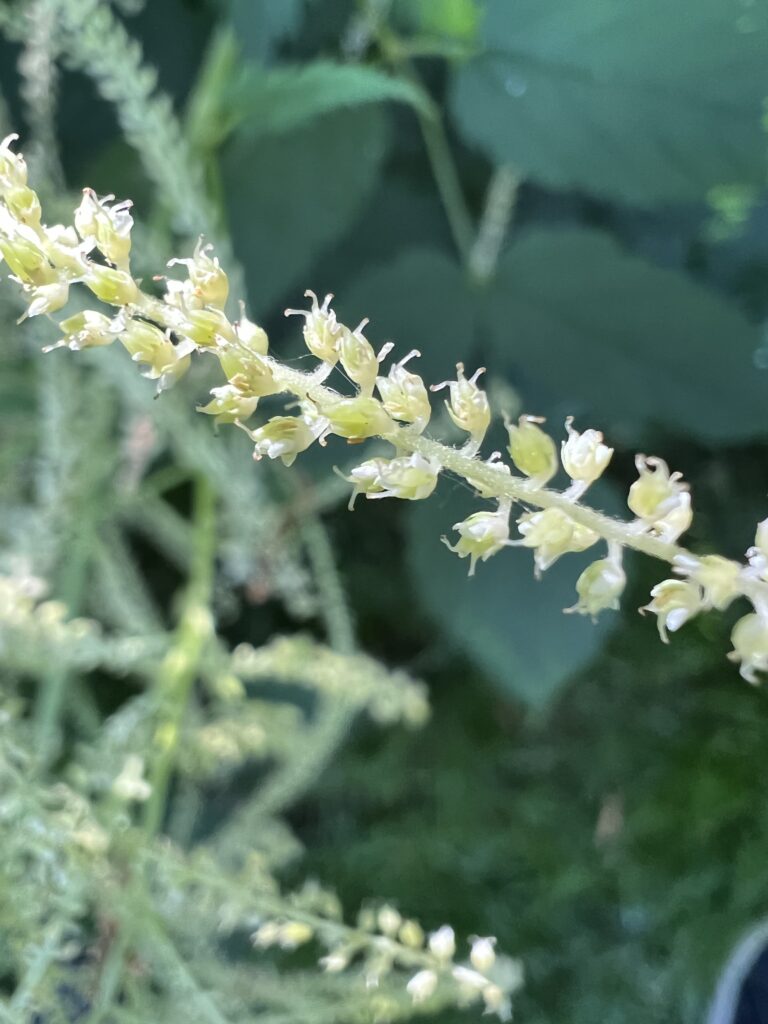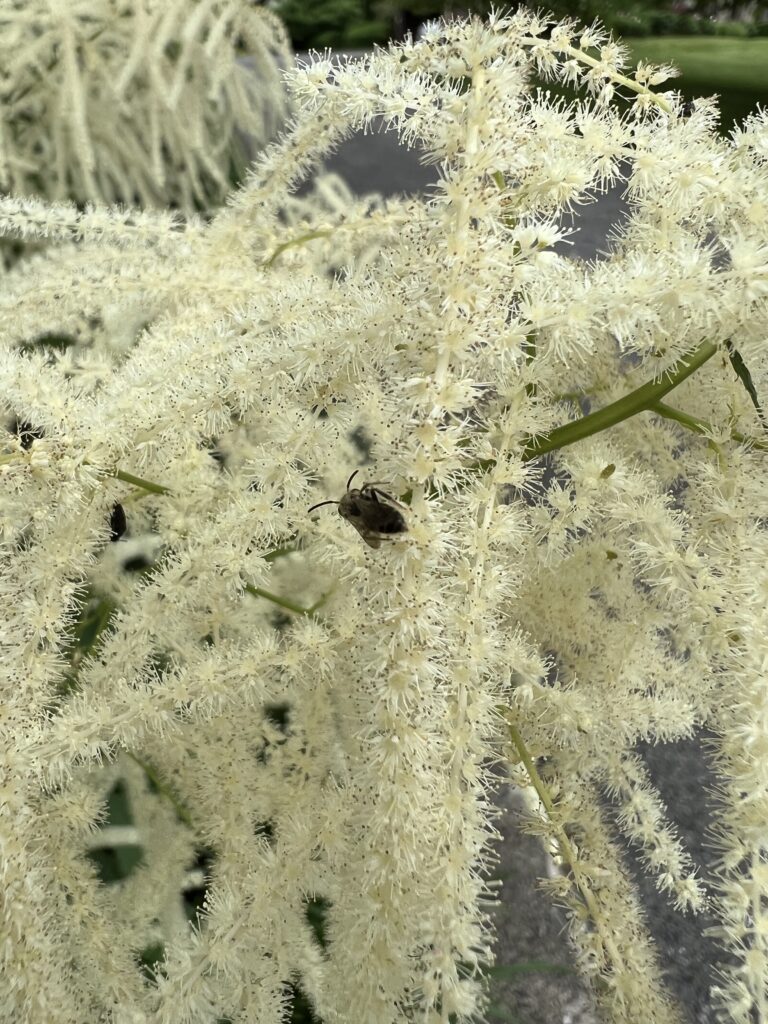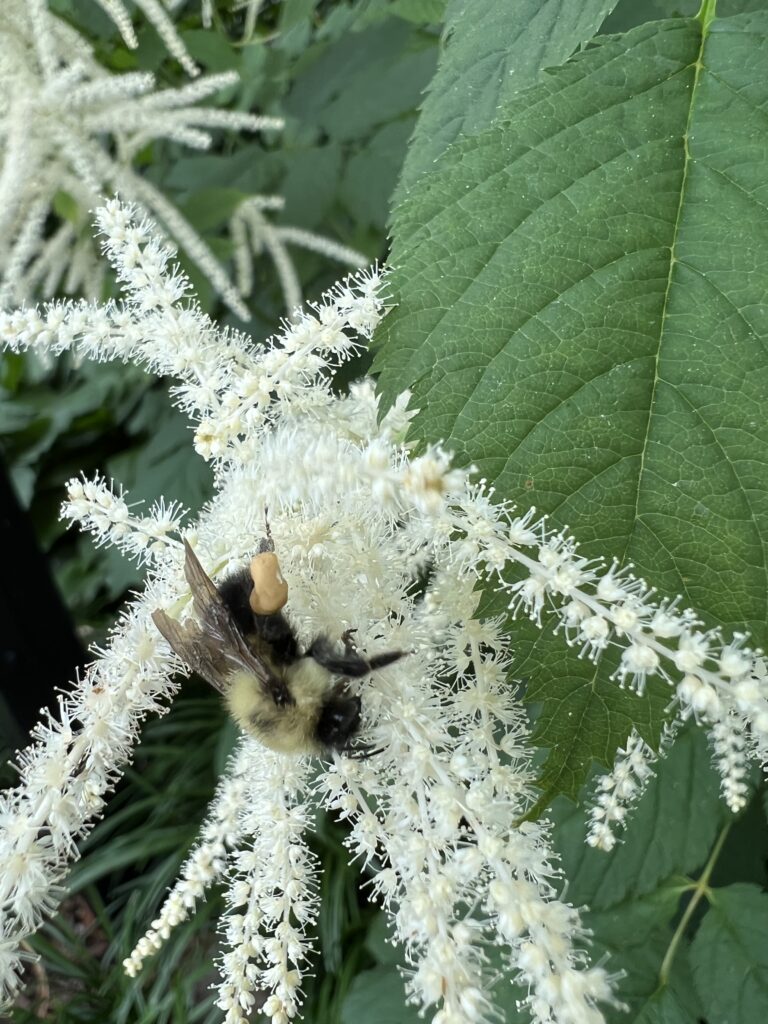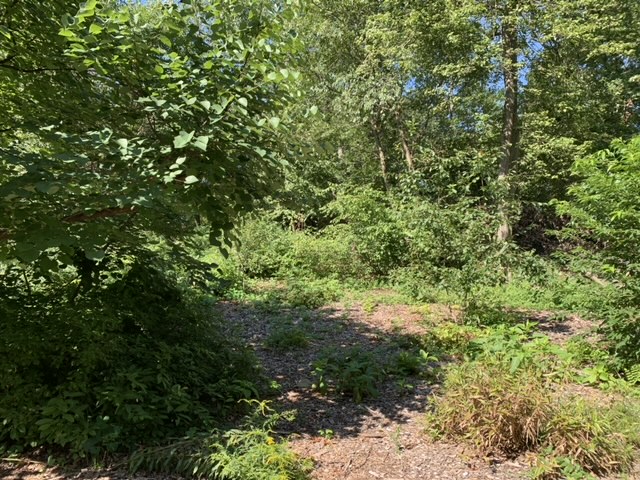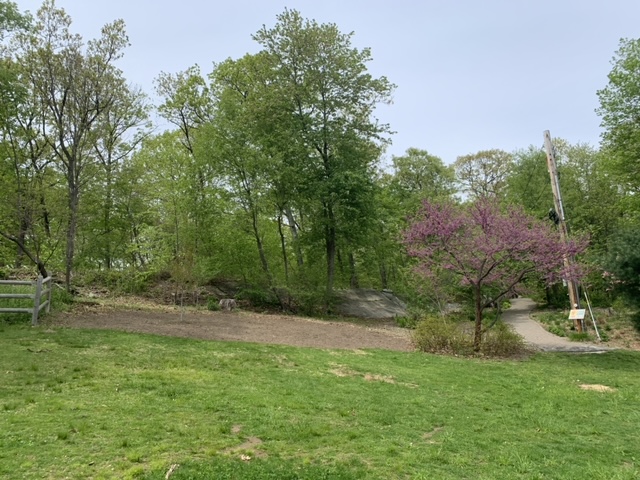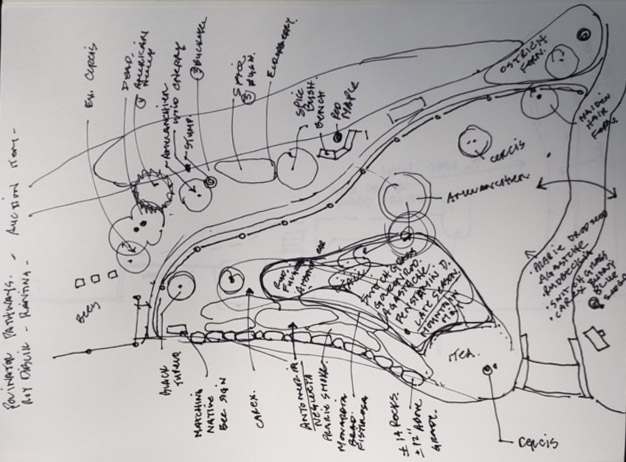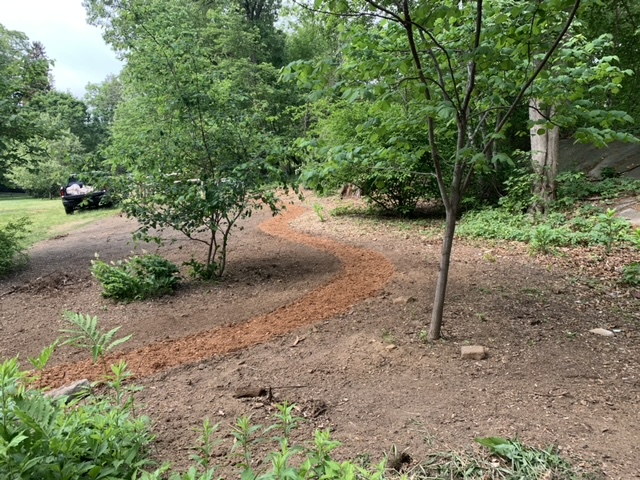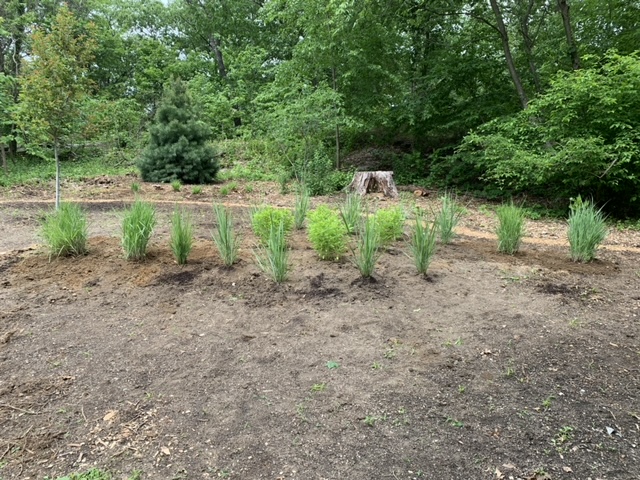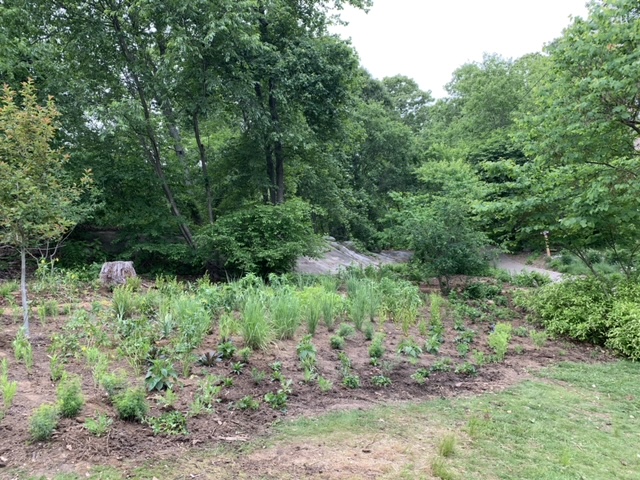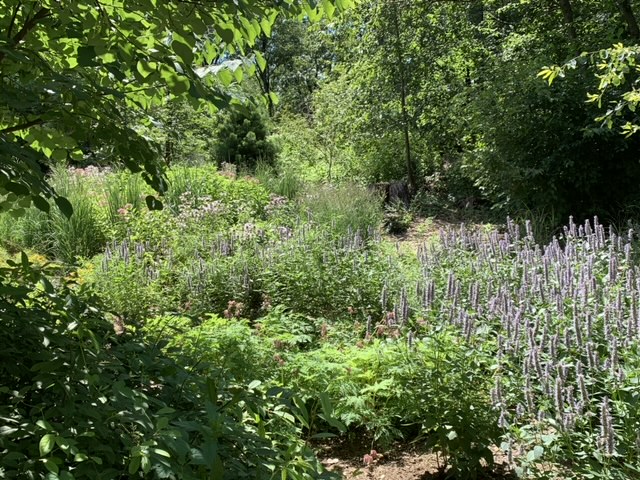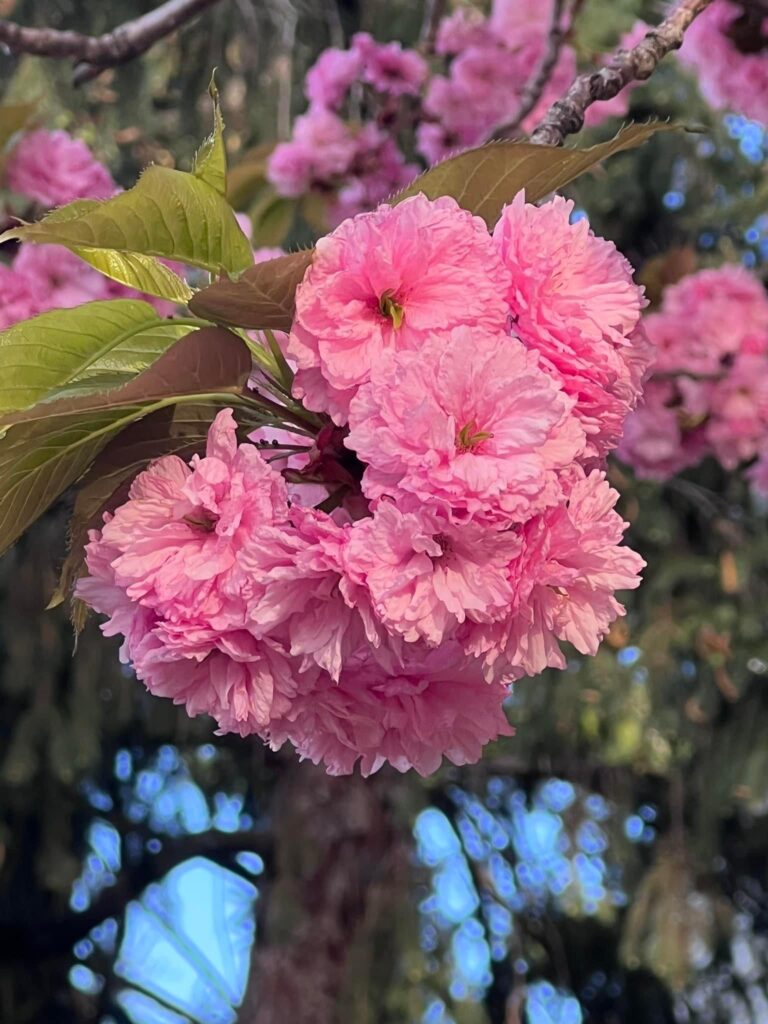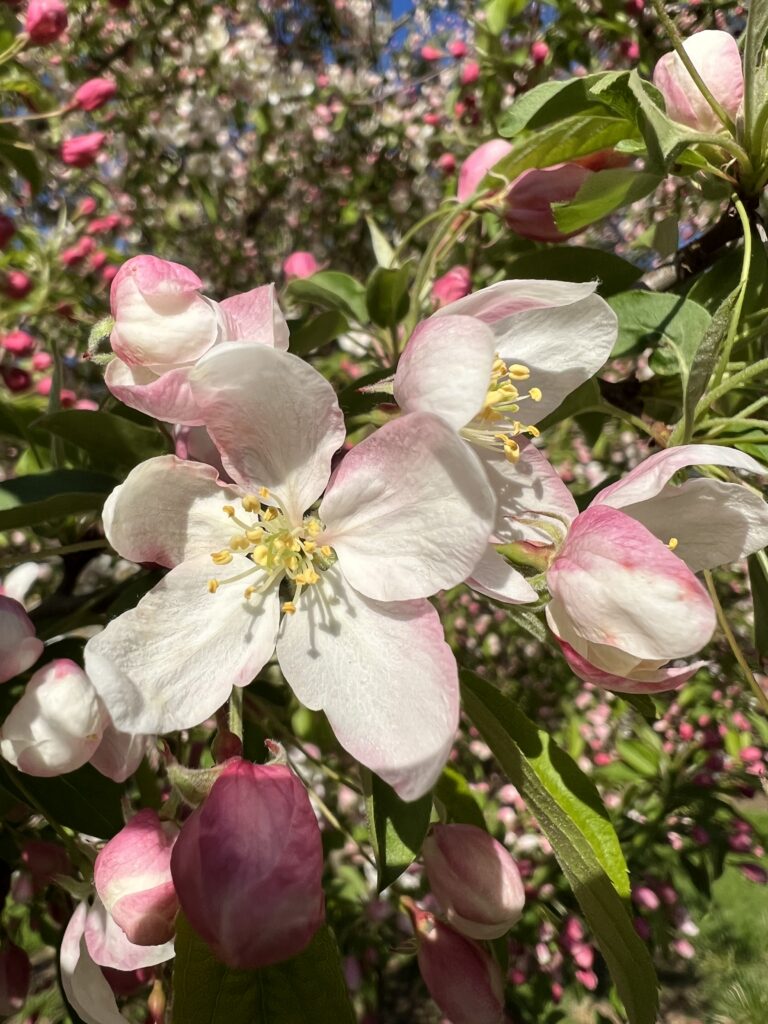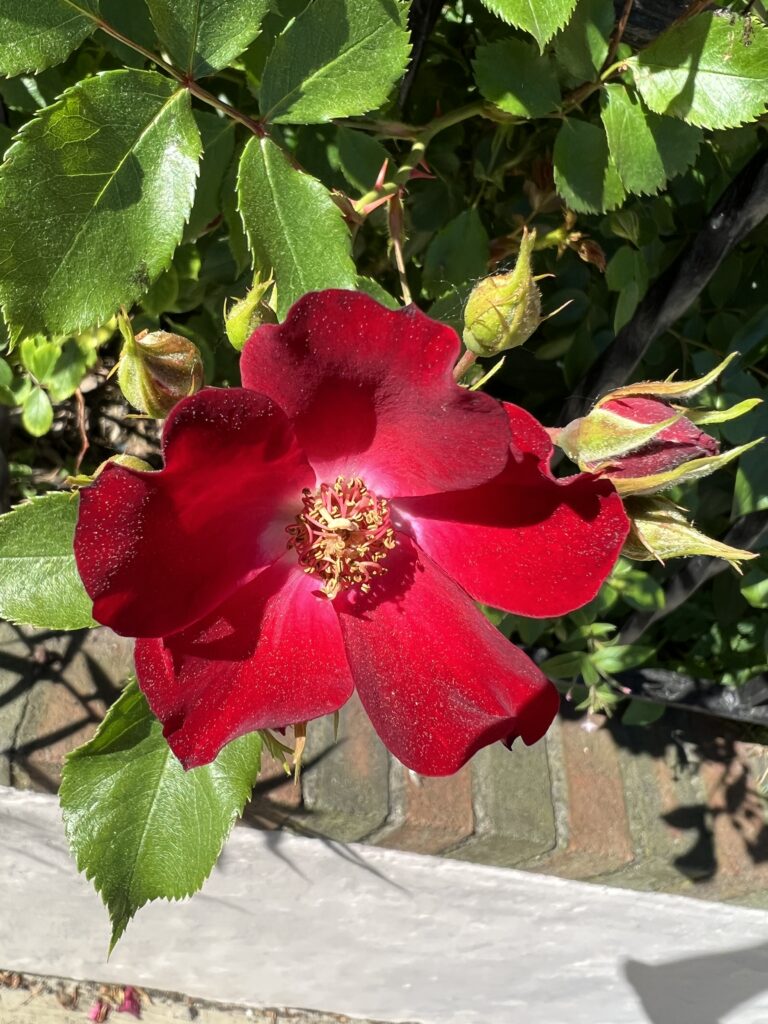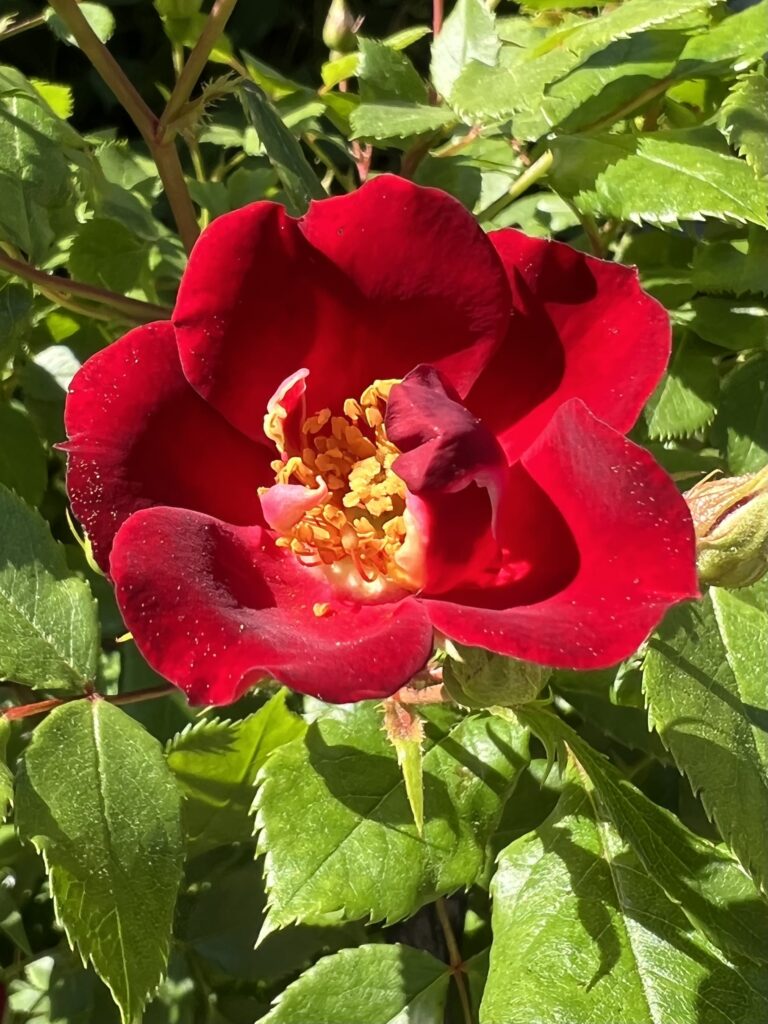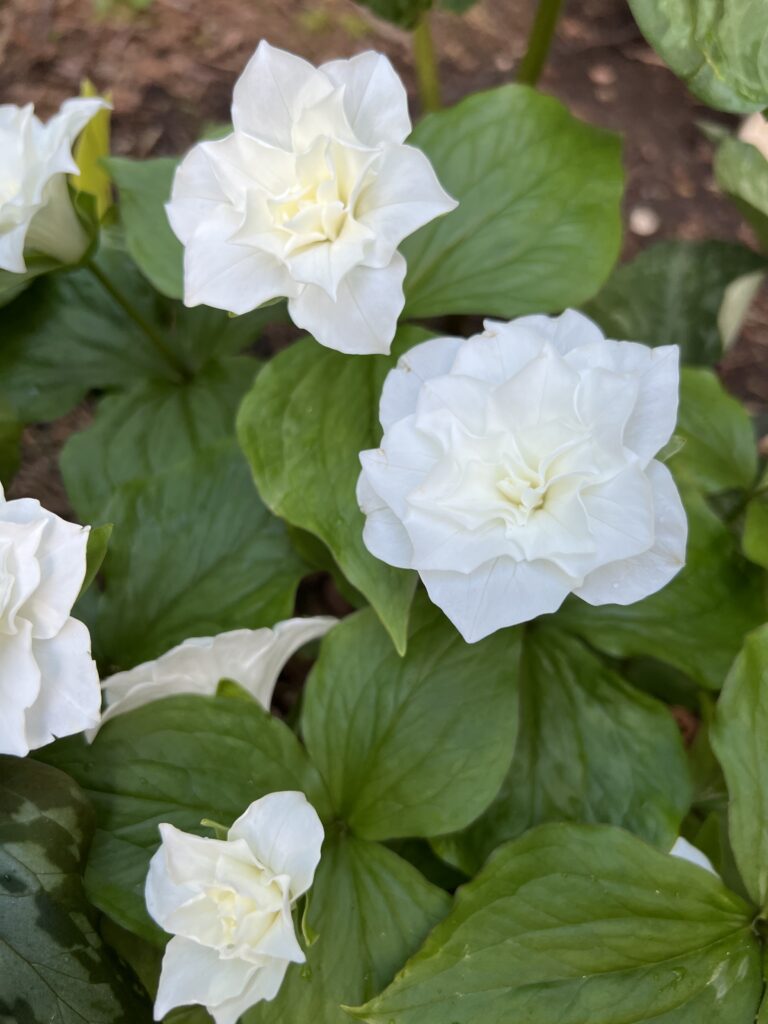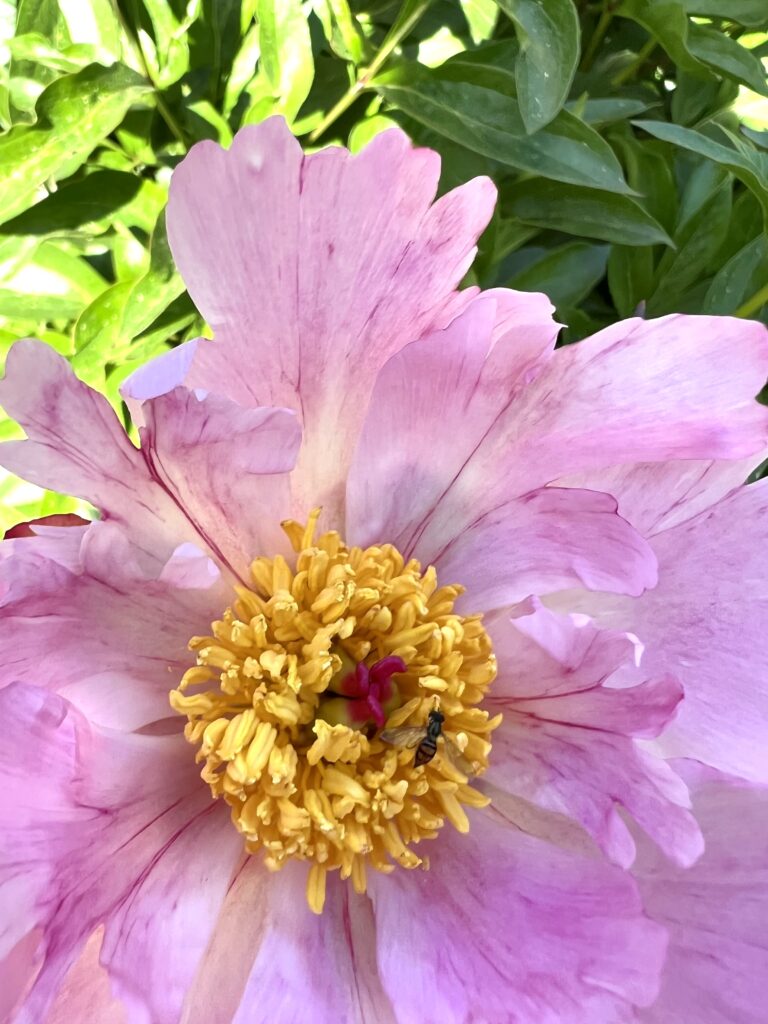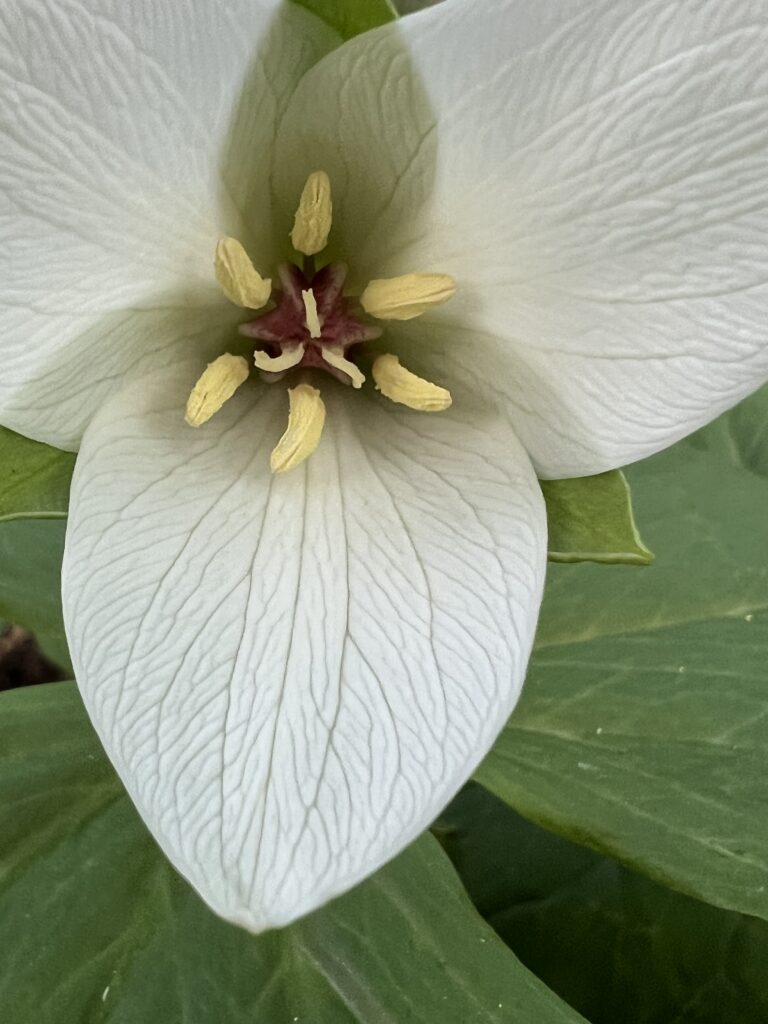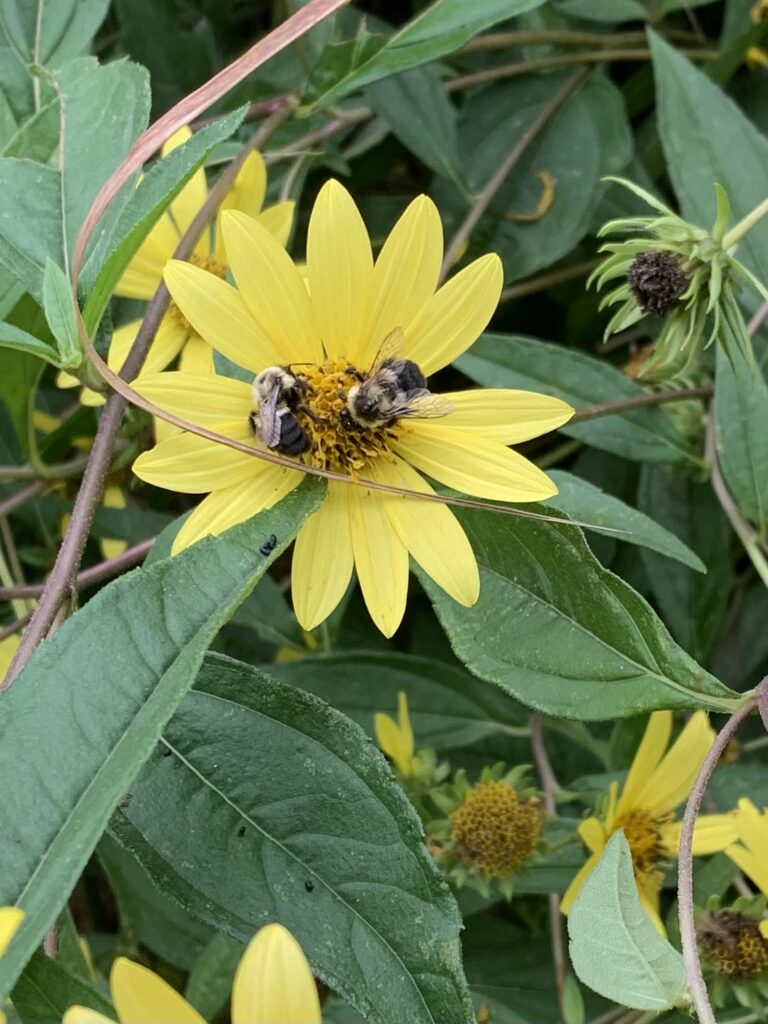
We are re-thinking mulch.
Gardeners are routinely advised to apply a 2 to 3-inch layer of wood chips or bark mulch around new plantings, and to mulch regularly thereafter. We are told that mulching maintains soil moisture, suppresses weeds, improves soil, and looks tidy. This advice has been given and followed for years without regard to plant type, soil conditions, or location.
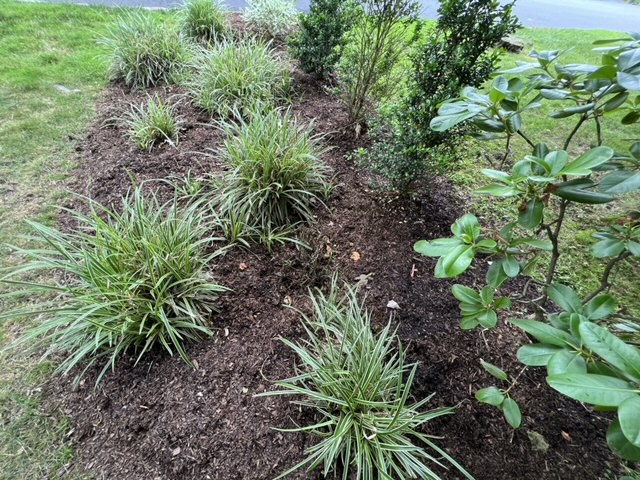
There is plenty of expert advice available about types of mulch and how to use them. For example, there is general agreement that color-enhanced mulch is not beneficial. And tree experts routinely warn against “mulch volcanos,” which can “girdle” a tree and kill it by holding excessive moisture around the trunk.
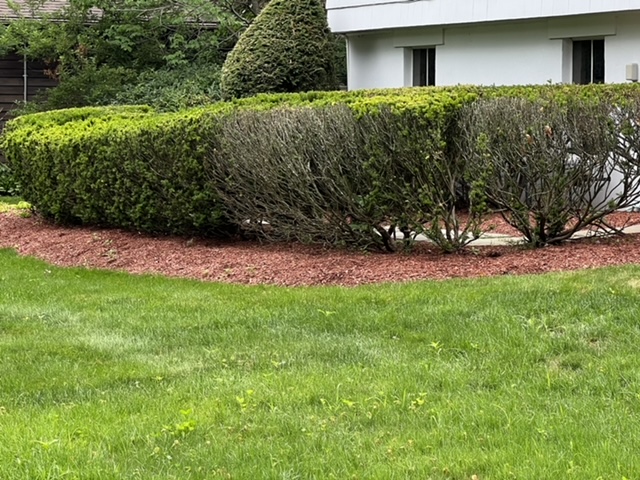
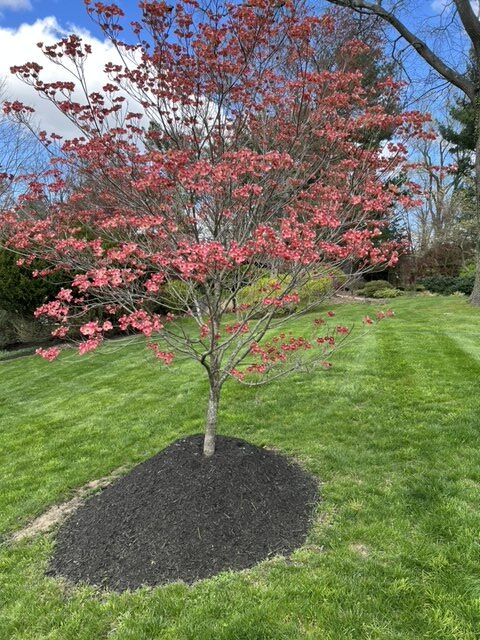
Until recently, however, there has been little discussion about whether it is necessary, or wise, to mulch at all. Our reconsideration of mulching began with a startling statement by noted horticulturist (and garden philosopher), Roy Diblik:
“There is not a plant on earth that has evolved living in a pile of wood chips.”
Roy Diblik
In his excellent book, The Know Maintenance Perennial Garden, Roy Diblik observes that plants have widely differing needs. When we buy a new plant, at a minimum we want to know whether it prefers sun or shade, dry or wet soil. The answer depends upon the habitat where that plant evolved. Did it originate in shady moist forests with soil enriched by fallen leaves, or did it evolve surviving in hard-packed clay in open prairies? The one thing we know for sure, is that it did not evolve in a habitat with a 2 to 3-inch layer of man-made wood mulch.
So, a wiser practice may be to consider whether mulching is appropriate in a given situation. Mulching vegetable gardens with compost or light organic matter that can be tilled into beds makes sense. Mulching formal beds of annuals for aesthetic and maintenance reasons is understandable. Trees and shrubs planted in full sun in lawn may very well benefit from a proper application mulch, if only to protect them from lawnmowers.
On the other hand, trees and shrubs in a moist wooded area may suffer from mildew and pest damage with a similar application of man-made mulch. They are better off as they evolved – with groundcovers and woodland perennials. As seasons change and leaves fall and decay, these plants become natural mulch and enrich the soil.
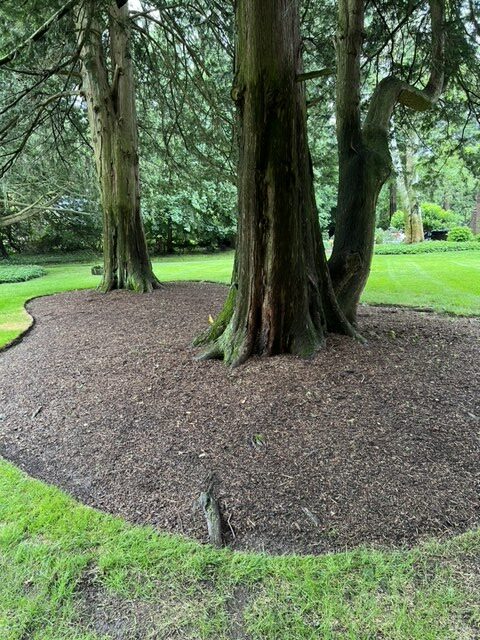
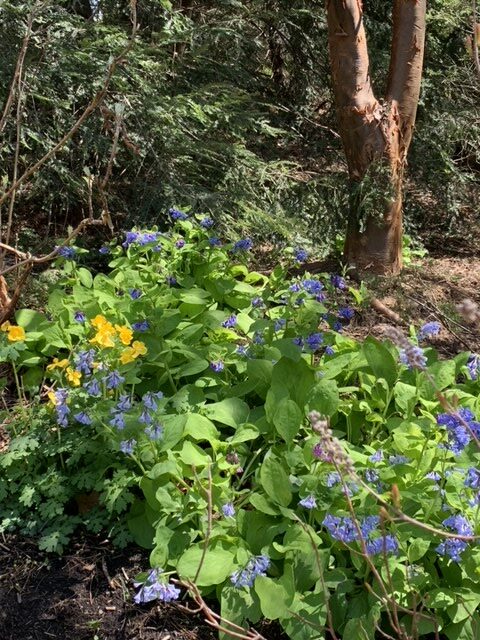
Contrary to traditional advice, applying a layer of wood mulch when planting perennials (the flowering plants we hope will return every year) may be counter-productive. First, mulch can hold excess moisture, and actually reflect heat, causing plants to die.
Second, heavy mulch prevents perennials from growing naturally. Perennials grow by expanding from the base of the plant, or by sending out shoots that run below or on top of the soil and then reach up for light. Many perennials form seeds after flowering and drop their seeds on open soil to begin new plants. A thick layer of wood mulch defeats both processes. If plants can’t grow and reproduce, they eventually fade away.
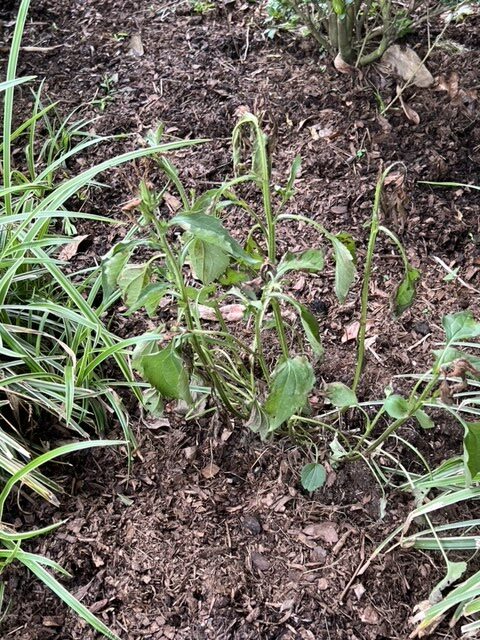
But if we don’t mulch, what about weeds? A good strategy is to plant perennials densely enough that within a season or two the desired plants occupy all the available space, making it difficult for weeds to establish. That is the approach we used in the Pollinator Garden at the Nature Center. (For a description of that process, click here)
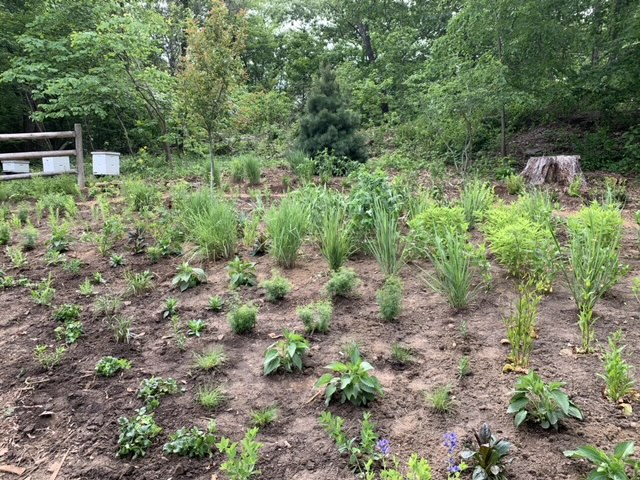
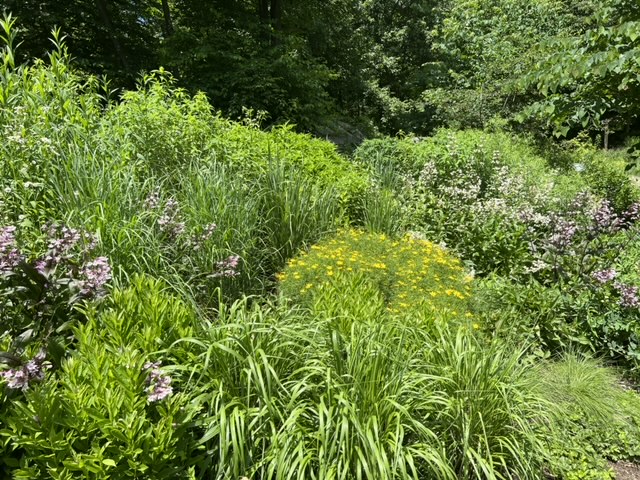
Weeding and watering are important in the first season or two until the perennials begin to fill in. As plants expand naturally, and even seed themselves into open areas, weeds become less problematic. If it is available, leaf mulch is a good alternative to wood chips or shredded bark. Leaves break down much more quickly, and do not inhibit the natural growth habits of perennials.
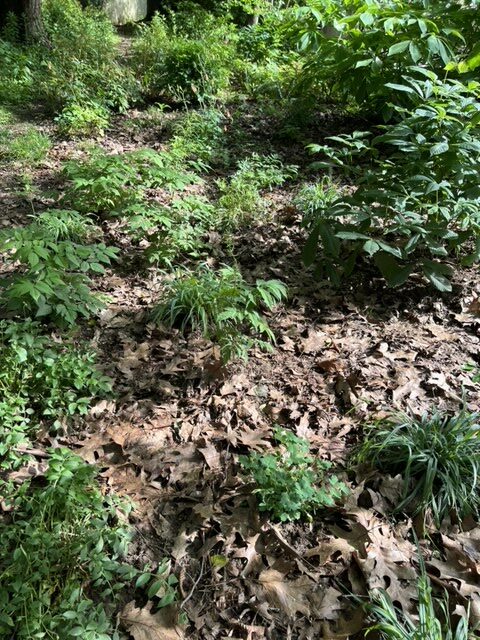
In the absence of man-made mulch, nature may offer some wonderful surprises. Not all of the plants that appear on open soil are “weeds.” We have seen “volunteer” native perennials return to areas that were previously mulched. Self-seeding perennials, like the wandering pink coneflower in the opening photo, surprise us by popping up in new spots. And native bees find open soil for their seasonal nests where we stopped mulching.
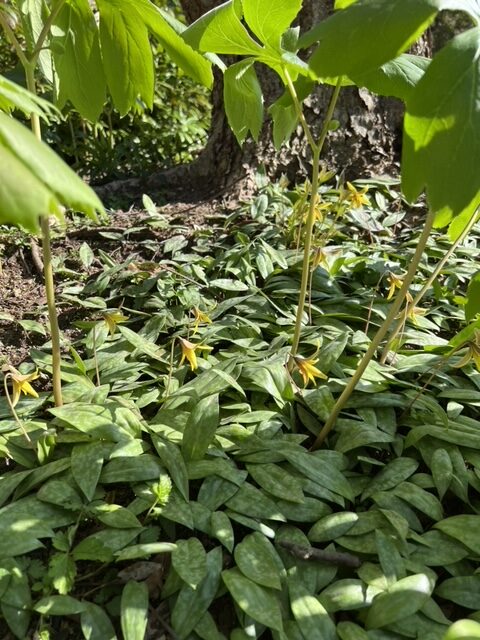
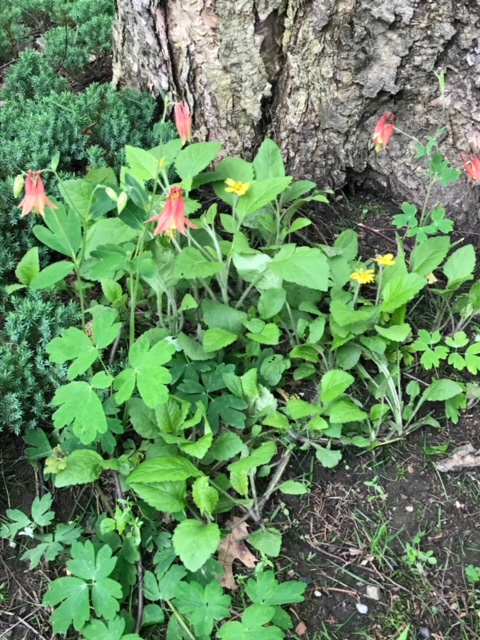
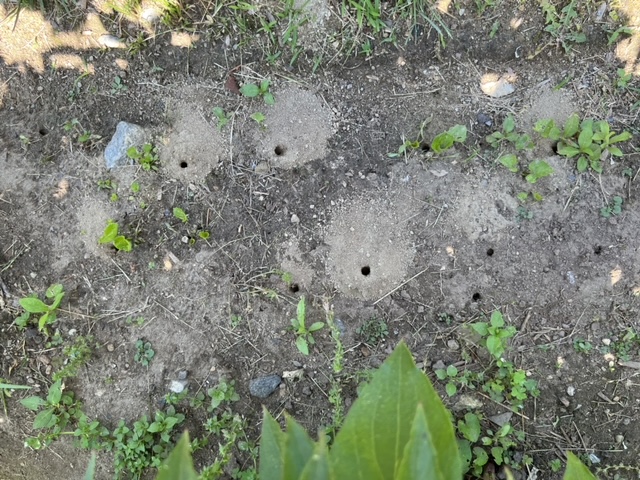
The important thing is to recognize that plants are not all the same, and the best approach to gardening is to be thoughtful about their differences. By understanding what they need, and allowing them to live as they were meant to, we open our minds – and our gardens – to nature and its surprises.


